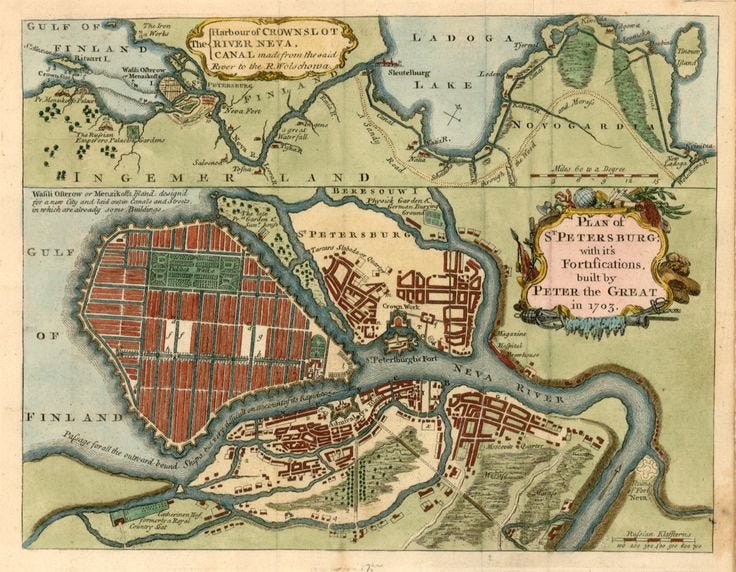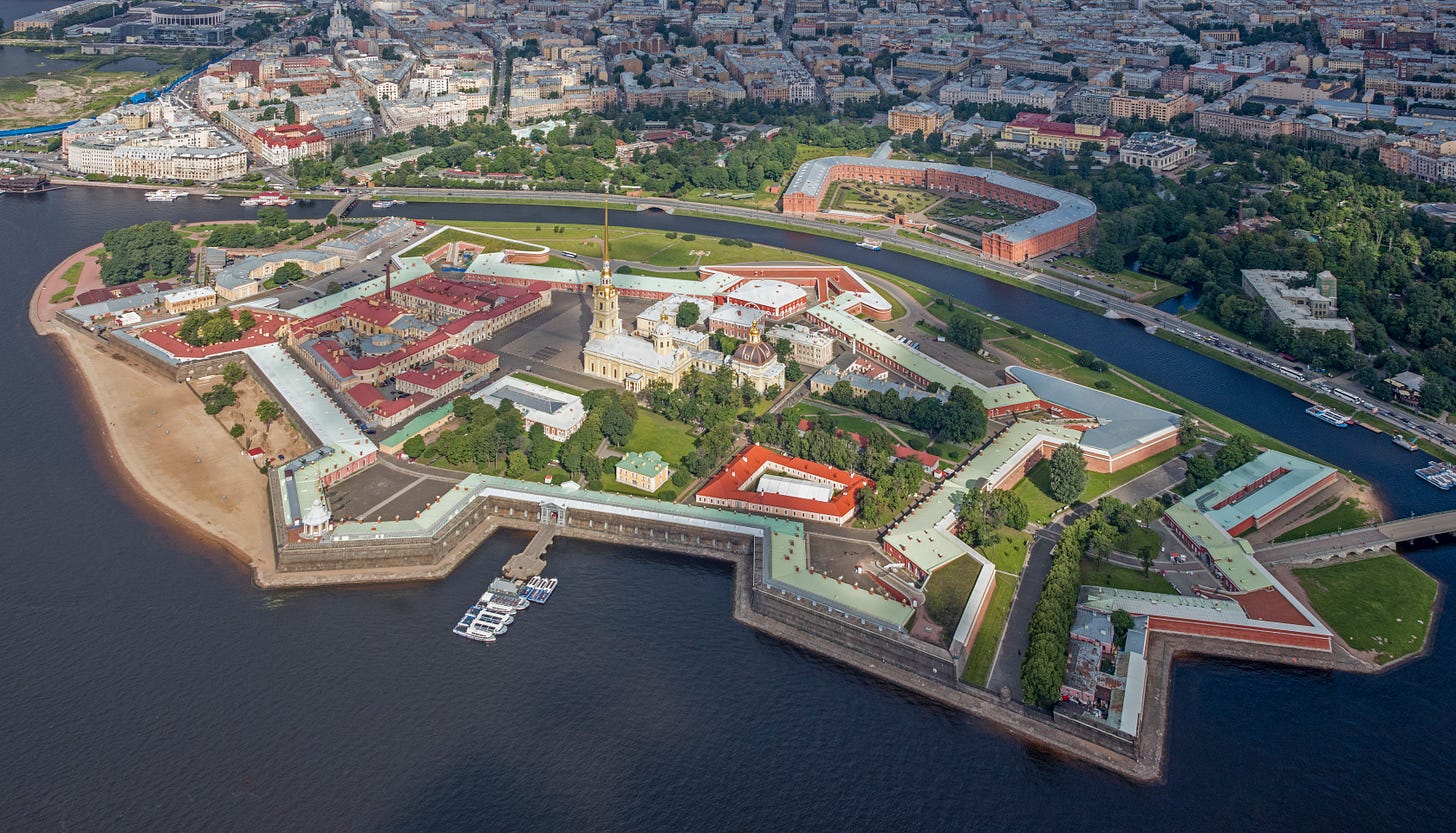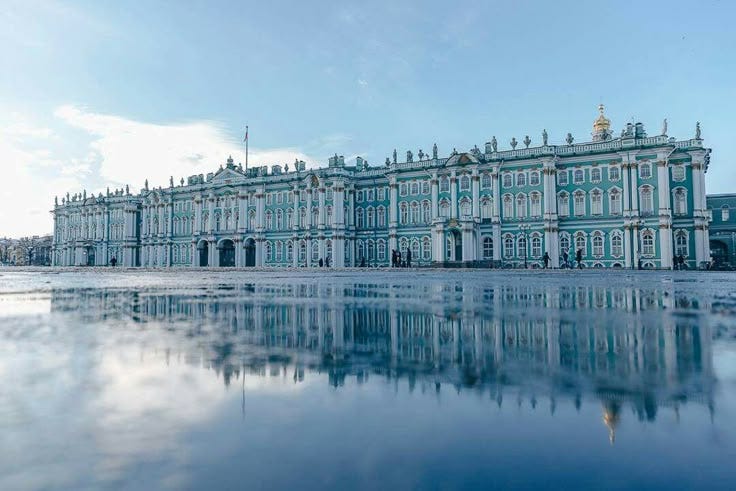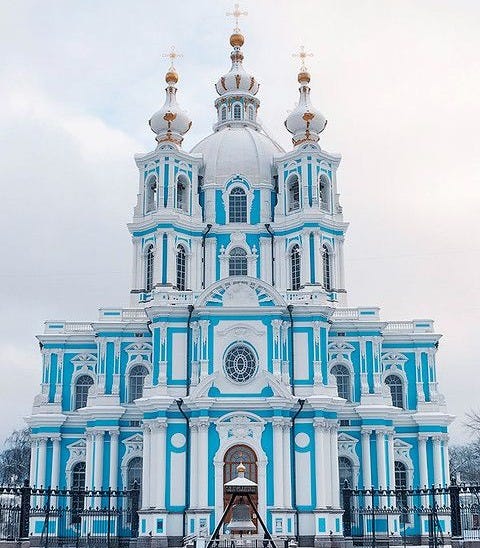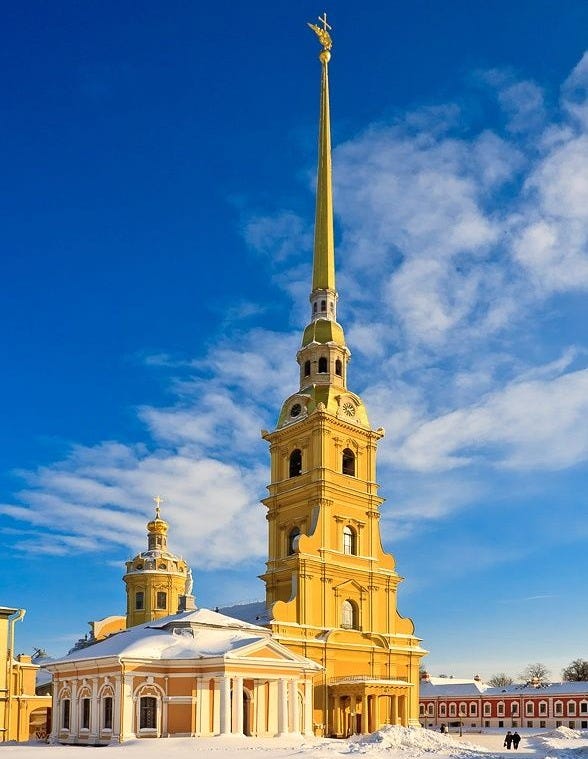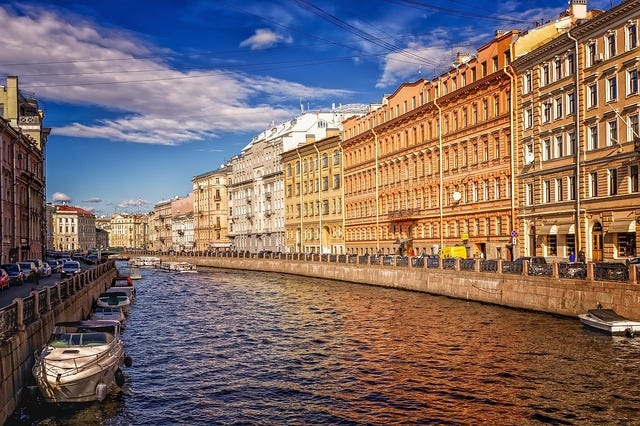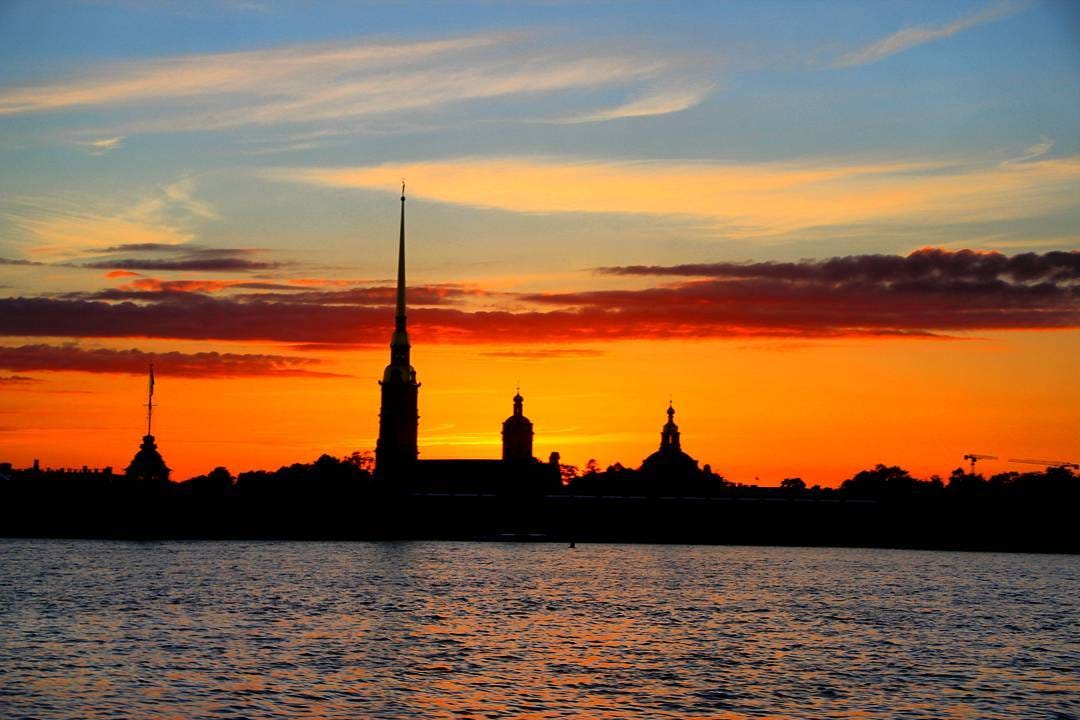A City Willed into Being: The Birth of St. Petersburg
On May 27, 1703, a marshy, mosquito-ridden delta where the Neva River spills into the Gulf of Finland became the unlikely cradle of a city that would redefine an empire.
St. Petersburg, Russia’s ‘Window to the West’, was not born of organic growth or ancient roots but of one man’s unyielding vision: Peter the Great.
To understand the founding of this city is to grapple with a paradox — a place of staggering beauty and brutal sacrifice, a monument to human ambition carved from swamp and strife.
A Tsar’s Dream Amid the Mud
Picture a desolate landscape: reeds swaying in the Baltic breeze, waterlogged earth swallowing boots whole, and a horizon unbroken save for the occasional cry of a seabird.
This was Zayachy Island in 1703, a speck of land claimed from Swedish control during the Great Northern War.
It was here, on this unpromising ground, that Tsar Peter I laid the first stone of the Peter and Paul Fortress, the seed from which St. Petersburg would grow.
Peter was no ordinary ruler.
Towering at nearly seven feet, he was a force of nature, a man who wielded both axe and ambition with equal ferocity. Having traveled Europe in his youth, he returned to Russia intoxicated by the grandeur of Versailles, the canals of Amsterdam, and the shipyards of London. Russia, in his view, languished in medieval shadow, its gaze turned inward.
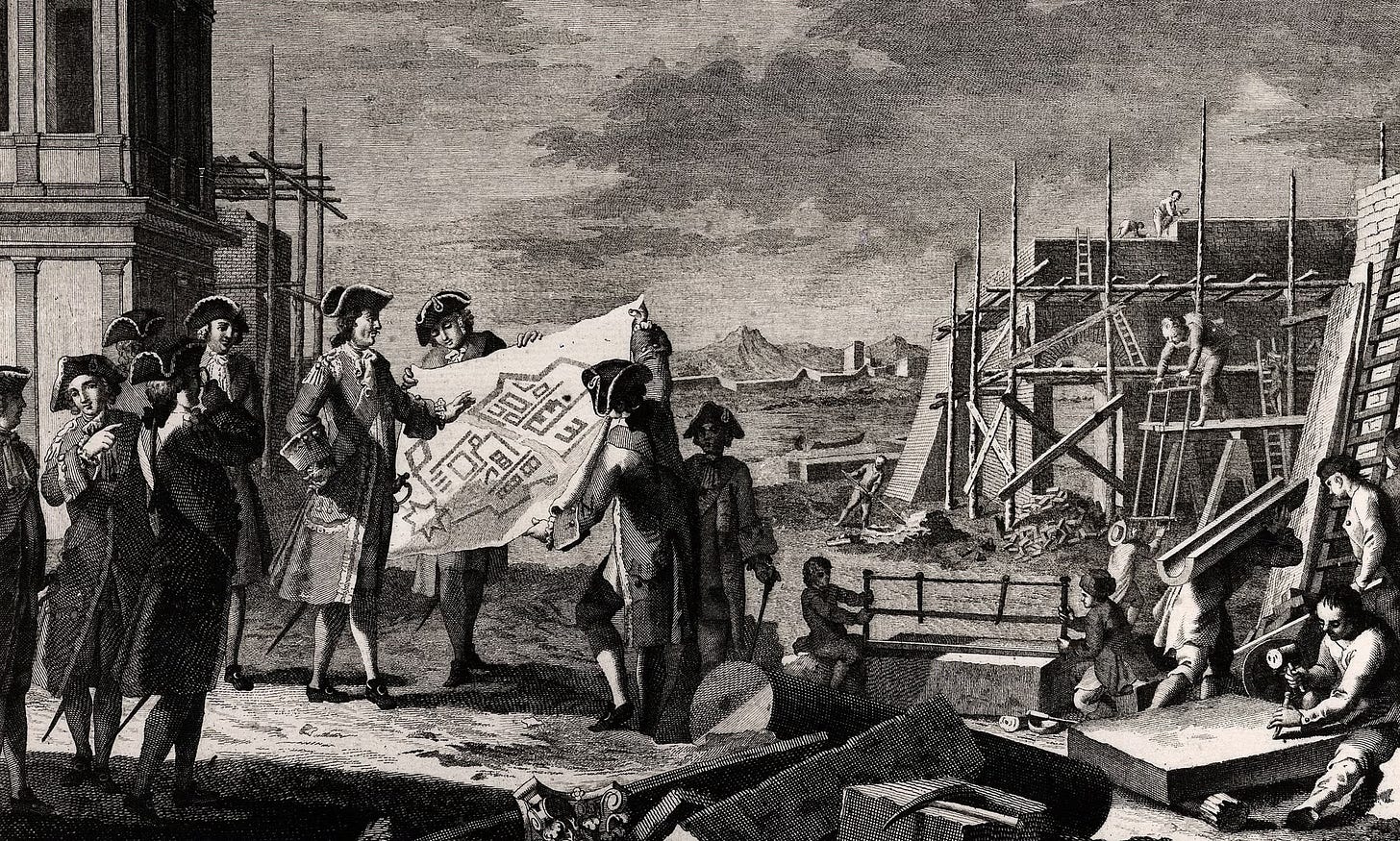
Peter dreamed of a modern empire, one that could rival the West in culture, commerce, and power. St. Petersburg was to be his manifesto in stone.
Why here?
The Neva’s delta was strategically vital, a gateway to Baltic trade and a bulwark against Swedish ambitions. Yet the choice was as much symbolic as practical. This was no mere city. It was a rebuke to Moscow’s insular traditions, a bold declaration that Russia would face Europe not as a supplicant but as an equal.
The date, May 27, 1703, marked not just the founding of a fortress but the birth of a new Russian identity.
A City Built on Bone and Will
The creation of St. Petersburg was an act of defiance against nature itself.
The land was treacherous — swampy, flood-prone, and bitterly cold. To transform it required labor on a scale both epic and tragic. Tens of thousands of serfs, prisoners, and conscripts were summoned, their lives expended as freely as the timber and stone they hauled. Workers toiled in mud up to their waists, felling trees, draining marshes, and piling foundations into unstable earth.
Disease, starvation, and exhaustion claimed countless lives. Estimates suggest 30,000 or more perished in the city’s early years. St. Petersburg’s shimmering canals and golden spires rest, quite literally, on a foundation of human sacrifice.
Yet from this grim toil emerged a city of breathtaking ambition.
Peter enlisted architects like Domenico Trezzini, a Swiss-Italian whose restrained Baroque style gave the Peter and Paul Fortress its austere elegance. The fortress’s golden spire, crowned with an angel, became a beacon of the Tsar’s aspirations. Trezzini and others designed broad avenues, inspired by European urban planning, and canals that evoked Venice and Amsterdam.
The city was not just built but choreographed — a stage for Russia’s reinvention.
A Cultural Crucible
St. Petersburg was a cultural revolution. Peter mandated that his nobles adopt Western dress, shave their beards, and embrace Enlightenment ideals. The city became a laboratory for this transformation, its palaces and academies drawing artists, scientists, and thinkers from across Europe.
The Kunstkamera, Russia’s first museum, was founded in 1714 to house Peter’s eclectic collection of curiosities, from taxidermied animals to scientific instruments — a testament to his hunger for knowledge.
The city’s architecture tells this story of cultural collision.
The Winter Palace, later expanded by Bartolomeo Rastrelli, melds Russian opulence with European Baroque, its emerald facade and gilded interiors a dazzling assertion of imperial might.
The Smolny Convent, with its sky-blue domes, feels both Orthodox and cosmopolitan, a bridge between East and West. Even the city’s layout, with its radial avenues and geometric precision, reflects the Enlightenment’s obsession with order and reason.
Yet St. Petersburg was not merely a European transplant. Its soul remained Russian, steeped in the mysticism of Orthodoxy and the resilience of a people accustomed to hardship.
The Peter and Paul Cathedral, where Russia’s tsars would be buried, anchors the city in a sacred continuity, its golden needle piercing the heavens as if to claim divine approval for Peter’s audacious project.
A Legacy Written in Water and Stone
St. Petersburg’s founding was a gamble that paid off. Within decades, it became Russia’s capital, a hub of trade, culture, and imperial power.
It was here that Pushkin penned his verses, Dostoevsky wrestled with existential despair, and Tchaikovsky composed symphonies that echoed the city’s melancholy beauty. The city’s canals, reflecting pastel facades under endless summer twilights, inspired artists and poets, while its winters, brutal and crystalline, shaped a stoic resilience.
But the cost of this splendor lingers.
The serfs who died in the marshes haunt the city’s mythos, their labor a silent undercurrent beneath its grandeur. St. Petersburg embodies the paradox of human achievement: beauty born of suffering, progress stained by sacrifice.
It is a city that mirrors its founder. Brilliant, flawed, and unrelenting.
Reflections on a City’s Soul
To walk St. Petersburg today is to tread a palimpsest of history. The city has endured floods, revolutions, and sieges, yet it remains a testament to Peter’s vision — a place where East meets West, where ambition wrestles with adversity.
What can we learn from St. Petersburg’s founding?
Perhaps it is a reminder that great endeavors, whether cities or dreams, are rarely born without cost. Peter’s city was a triumph of will over circumstance, but it also reveals the human toll of such ambition. It asks us to consider what we are willing to sacrifice for progress — and whether beauty can ever fully redeem the price.
St. Petersburg is a story of a tsar who dared to dream, of a people who paid the price, and of a city that continues to captivate the world with its improbable, indomitable grace.



